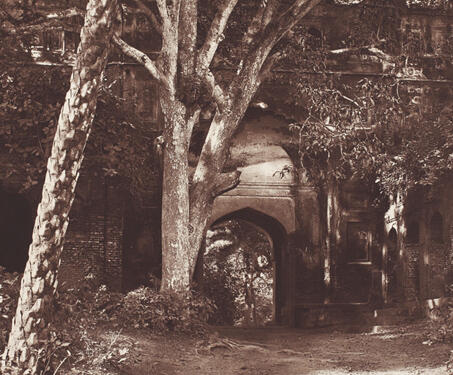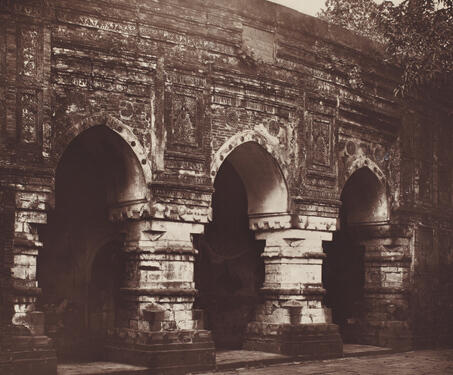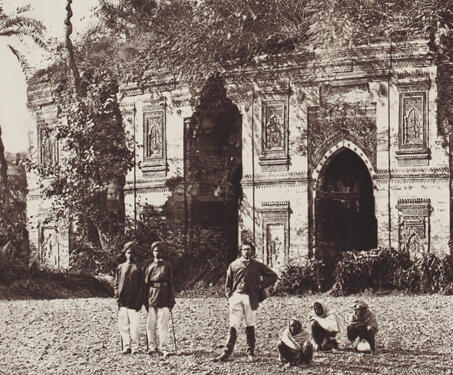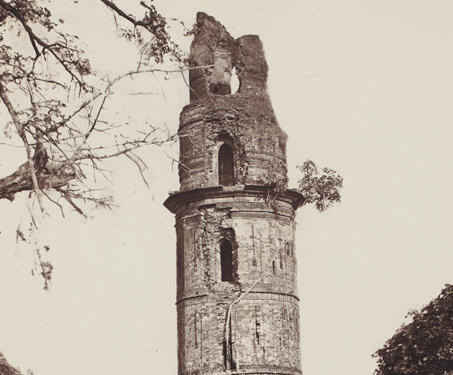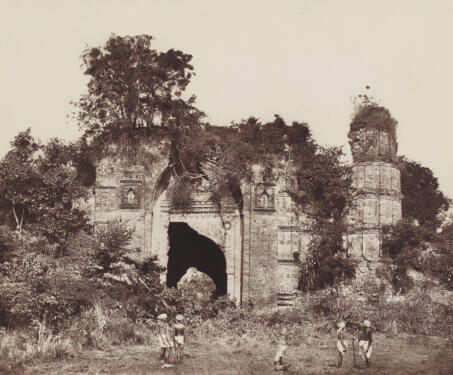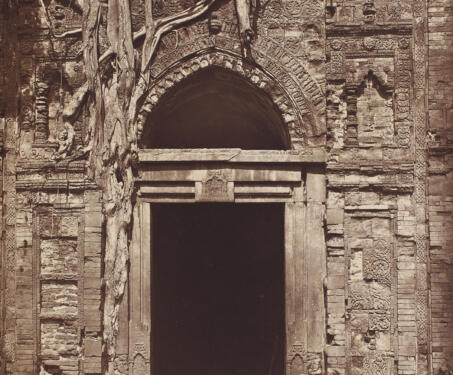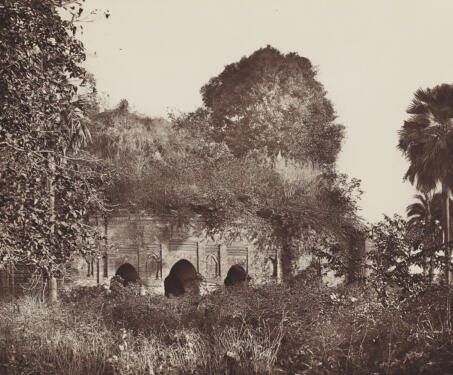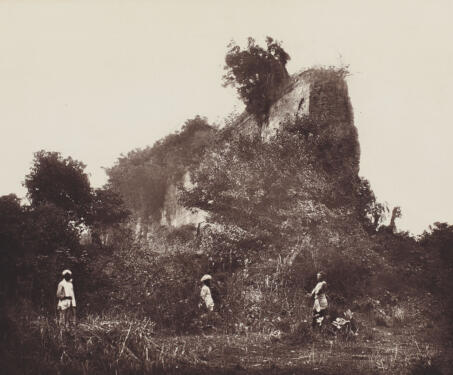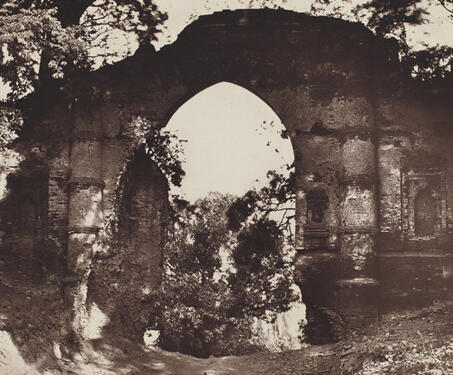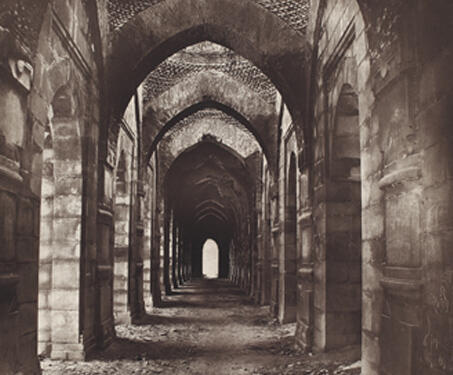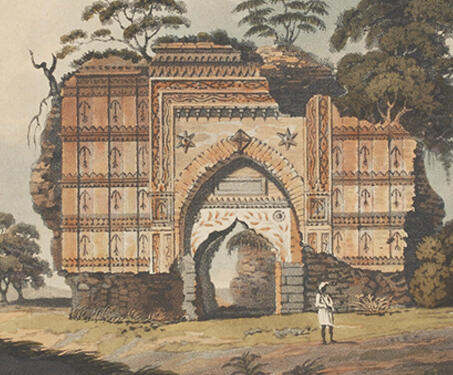

The Ruins of Gour
This book comprises 18 drawings of various prominent structures that once made up the ancient citadel of Gaur, as well as a topographical map of the expanse of its ruins as found in the late 18th and early 19th centuries. Gaur, also known as Gauda, Lakshmanavati, Lakhnauti and Jannatabad, served as the seat of many… Read more »

